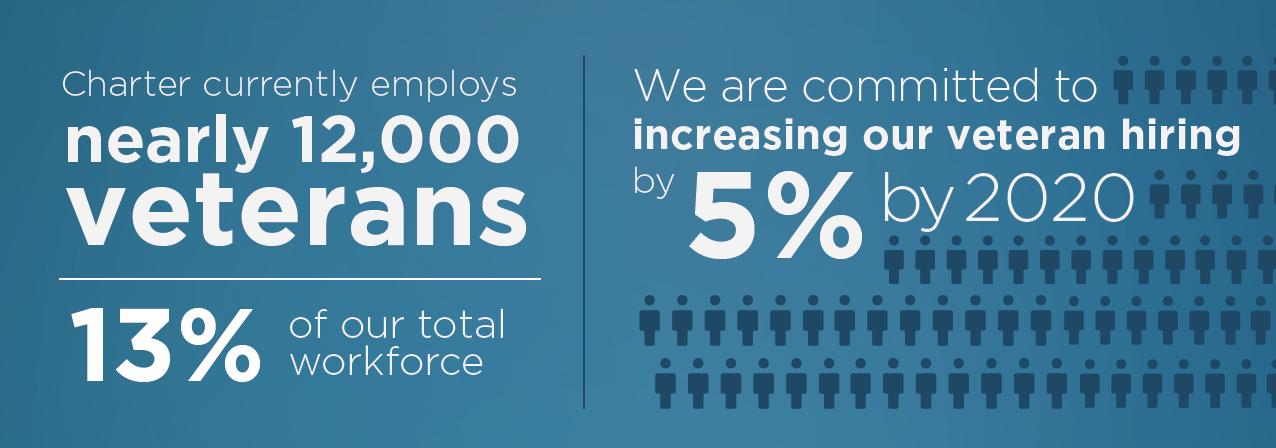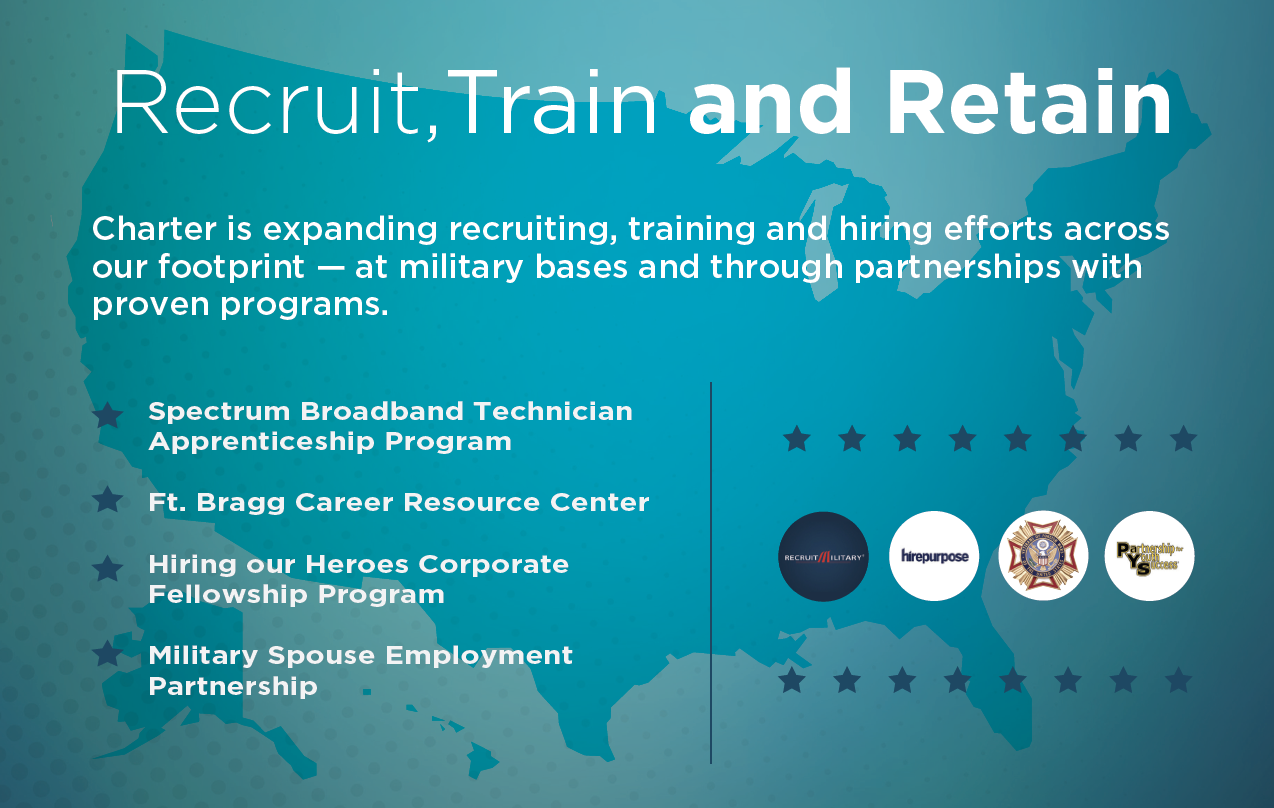Veterans and Military Families
How to Help Veterans Start Careers
September 26, 2017
Share Article:
By: Paul Marchand, Executive Vice President and Chief Human Resources Officer, Charter Communications
By 2020, our country will have almost two million veterans under the age of 34 who served in post 9/11 conflicts. These men and women have paid our country a great service, and they have much to contribute when they return to the workforce.
Despite years of experience in the world’s most technologically advanced military, there are U.S. veterans leaving the service unable to find a job. Although the annual veteran unemployment rate is at a record low, it remains consistently above the overall unemployment rate for other workers.
Soldiers returning from World War II were able to harness the G.I. Bill to secure high-value jobs — with wages allowing them to fulfill the American dream and drive a new era of economic growth.
Today, we have both the obligation and the opportunity to tap into the vast skills of a new generation of returning soldiers and provide them the same opportunity afforded to the Greatest Generation by training and hiring them to be successfully employed in today’s economy.
Registered Apprenticeship programs and on-the-job training can help veterans successfully transition from the military to a new career they can continue to proud of. Certified by the U.S. Department of Labor (USDOL), apprenticeship programs put veterans on a career track, with good benefits and opportunities for continued advancement. GI Bill participants in these apprenticeship programs are eligible to receive tax-free GI benefits while also being paid by the company that has hired them. Once the apprenticeship or training is complete, those who successfully complete the program receive national certification in a given field.
At Charter Communications, I’ve seen firsthand how these programs yield real-world benefits to a company and their veteran employees. Today, about 13 percent of our company’s workforce are veterans, and we are committed to increasing our overall veteran hiring by 5 percent by 2020. A key initiative to hire, train and retain veterans in order to reach our goal is expanding Charter’s Spectrum Broadband Technician Program to a national program available across our 41-state footprint.

Charter’s program is certified by the U.S. Department of Labor and provides newly-hired Spectrum broadband techs the opportunity to receive Apprenticeship Certification. Enrollees complete thousands of hours of on-the-job training and an extensive classroom curriculum up to four years. Qualified veterans can secure GI benefits by while completing the program putting them in the position to earn tax free money in addition to their paycheck.
That is why I was excited to take part in Wednesday’s hearing before the House Veterans Affairs Subcommittee on Economic Opportunity that examined ways to improve the certification process for GI Bill approved apprenticeship programs.
With government streamlining, apprenticeship programs could be even more effective. In addition to certification by the USDOL, companies must obtain approval from states in order for enrolled veterans to be able to collect his or her GI Bill benefits. As the requirements for state approval vary from state to state, federal and state agencies should consider harmonizing their processes and requirements. Such streamlining would facilitate the expansion of apprenticeship programs nationwide and put more veterans to work more quickly.
We owe a solemn debt to our veterans. After they leave active duty, we need to make sure they are put on a career path that can help them buy homes, send their children to college and fulfill the American dream. With more men and women leaving the military every day, we don’t have a moment to lose. It is time for the private sector to step up and do its part.
Learn more about the initiatives and partnerships that support our commitment to veteran hiring:

